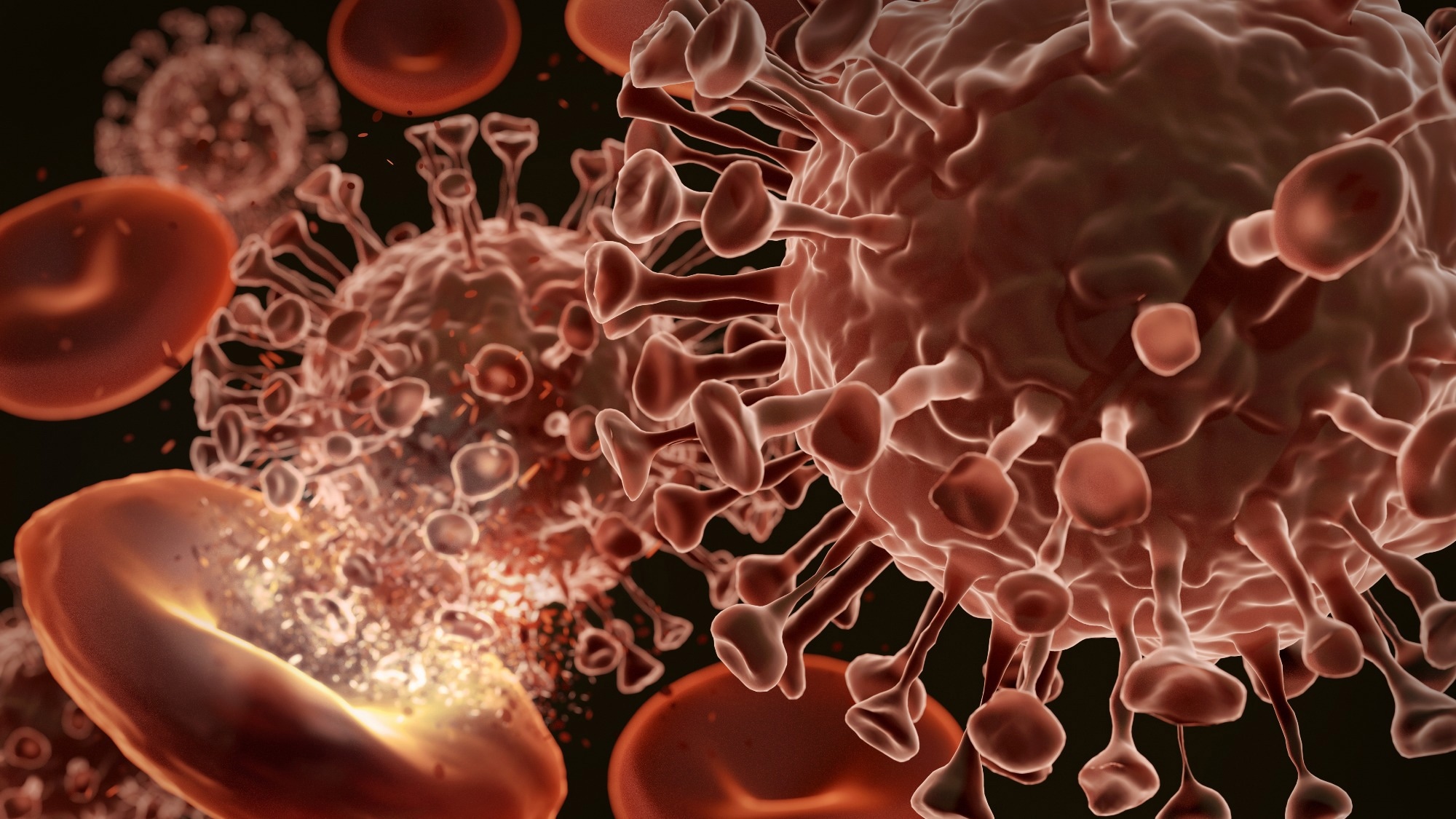The rapid spread of the severe acute respiratory syndrome coronavirus-2 (SARS-CoV-2) led to the coronavirus disease 2019 (COVID-19) pandemic. Common post-COVID-19 symptoms include fatigue, muscle weakness, headaches, pulmonary dysfunction, anxiety, digestive disorders, anosmia, sexual dysfunction, difficulty concentrating, and dysgeusia. Therefore, both autonomic impairments and neurological dysfunction have been associated with post-COVID-19 conditions.
 Study: Tachykinins and the potential causal factors for post-COVID-19 condition. Image Credit: Adisorn Saovadee / Shutterstock.com
Study: Tachykinins and the potential causal factors for post-COVID-19 condition. Image Credit: Adisorn Saovadee / Shutterstock.com
About the study
Tachykinins are one of the largest families of neuropeptides in mammals, with substance P as the most studied member of this family. Substance P peptide is expressed throughout the immune and nervous systems and influences many physiopathological processes.
In a recent The Lancet Microbe study, scientists review the available evidence on the association between post-COVID-19 conditions and tachykinins to ultimately propose a putative pathogenic mechanism. Identification of potential tachykinin receptors could be used as a potential target for the treatment of post-COVID-19 conditions.
Tachykinins and physiopathological processes
Tachykinins defend the host against harmful stressors, during which the nervous system rapidly communicates with immune cells so that it can quickly respond to pathogenic invasion.
Substance P and neurokinin (NK) A are synthesized by the peripheral and enteric nerves. These biomolecules are also expressed by immune cells, such as macrophages, lymphocytes, dendritic cells, and eosinophils. Tachykinins connect the nervous and immune systems and establish cellular connections.
Tachykinin neurokinin 1 receptors are present in both peripheral and central nervous systems (PNS and CNS, respectively). In the CNS, these receptors regulate respiratory and cardiovascular functions, whereas in the spinal cord, NK1Rs regulate nociception and autonomic reflexes.
A prior study revealed that substance P was produced by cell bodies of vagal sensory ganglia and is transferred bidirectionally towards the CNS, as well as the thoracic and abdominal viscera nerves, which is associated with inflammation, depression, nociception, and anxiety.
Tachykinins are associated with processes such as pain, acute inflammation, infection, cancer, venous thromboembolism, hematopoiesis, and taste perception. Substance P and its receptor NK1R are present in the brain region that regulates vomiting urges, with antagonism against this receptor used to treat chemotherapy-induced nausea and vomiting.
Many of the aforementioned conditions resemble post-COVID-19 symptoms. Thus, it is imperative to study whether tachykinins are associated with the manifestation of post-COVID-19 condition syndromes.
Tachykinins and post-COVID-19 conditions
Substance P, neuropeptides, and NKs induce vasodilation, leucocyte chemotaxis, mucus secretion, and edema, which subsequently leads to pulmonary dysfunction, a common symptom observed in post-COVID-19 conditions. Although the role of bradykinin in chronic respiratory distress syndrome during COVID-19 has been well explored, more research is needed for substance P.
Substance P and NK1R binding have been linked to acute lung damage due to increased microvascular permeability, neutrophil recruitment, and edema. Furthermore, substance P binding enhances interleukin 6 (IL-6), IL-1β, and tumor necrosis factor α (TNF-α) messenger ribonucleic acid (mRNA) expression.
NK1R antagonist disrupts NK1R and substance P signaling, thereby reversing pulmonary inflammation and injury. These studies indicate the likely role of substance P in pulmonary dysfunction linked to post-COVID-19 conditions and the therapeutic potential of NK1R antagonism to block this pathology.
Extreme fatigue is a common post-COVID condition, which could be caused by dysautonomia that is associated with a lowering of heart rate and weak oxygen saturation during peak exercise. Fatigue following viral infection occurs due to the expression of interferon α (IFN-α) and neuroinflammation through suppression of the serotonergic system.
Several studies have indicated that substance P is co-expressed with serotonin, both of which are involved in breathing. It is possible that immune responses in the peripheral nervous system induce multiple tachykinins, including substance P, causing dysautonomia.
Sexual dysfunction and hair loss are two post-COVID-19 conditions that could be associated with substance P. Menstrual cycle disturbances have also been reported in post-COVID-19 conditions and have been linked to neurokinin B dysfunction.
Both tachykinins and monocytes are associated with COVID-19-related inflammation. Substance P induces the synthesis of inflammatory cytokines IL-6, IL-1β, and IL-8 in vitro, thereby increasing edema and pain in COVID-19 patients.
Substance P enhances IFN-γ release and neuroinflammation in granulomas. IFN-γ is the primary activator of natural killer cells and macrophages. Natural killer cells are associated with antigen presentation in viral infection; therefore, both substance P and IFN-γ are the linking molecules between adaptive and innate immune transition.
Researchers have hypothesized that substance P triggers immunocytes with pro-inflammatory phenotypes and, as a result, contributes to neurogenic inflammation. This neural inflammation contributes to the neurological pathologies observed in many post-COVID-19 conditions.
The transition from peripheral neuroinflammation to the CNS occurs through several pathways. SARS-CoV-2 enters the human body through the oral and nasopharyngeal mucosa and reaches the trigeminovascular system. Here, the virus expresses substance P, neurokinin A, and other neuropeptides, which ultimately results in CNS inflammation.
Conclusions
The current study summarized available evidence supporting the hypothesis that substance P can be the causal factor of post-COVID-19 conditions.
Journal reference:
- Janket, S., Fraser, D. D., Baird, A. E., et al. (2023) Tachykinins and the potential causal factors for post-COVID-19 condition. The Lancet Microbe. doi:10.1016/S2666-5247(23)00111-8